An international team of astronomers has published amazing new images taken by the James Webb Space Telescope (JWST). They demonstrate the Orion Nebula, one of the regions of active star formation closest to Earth.
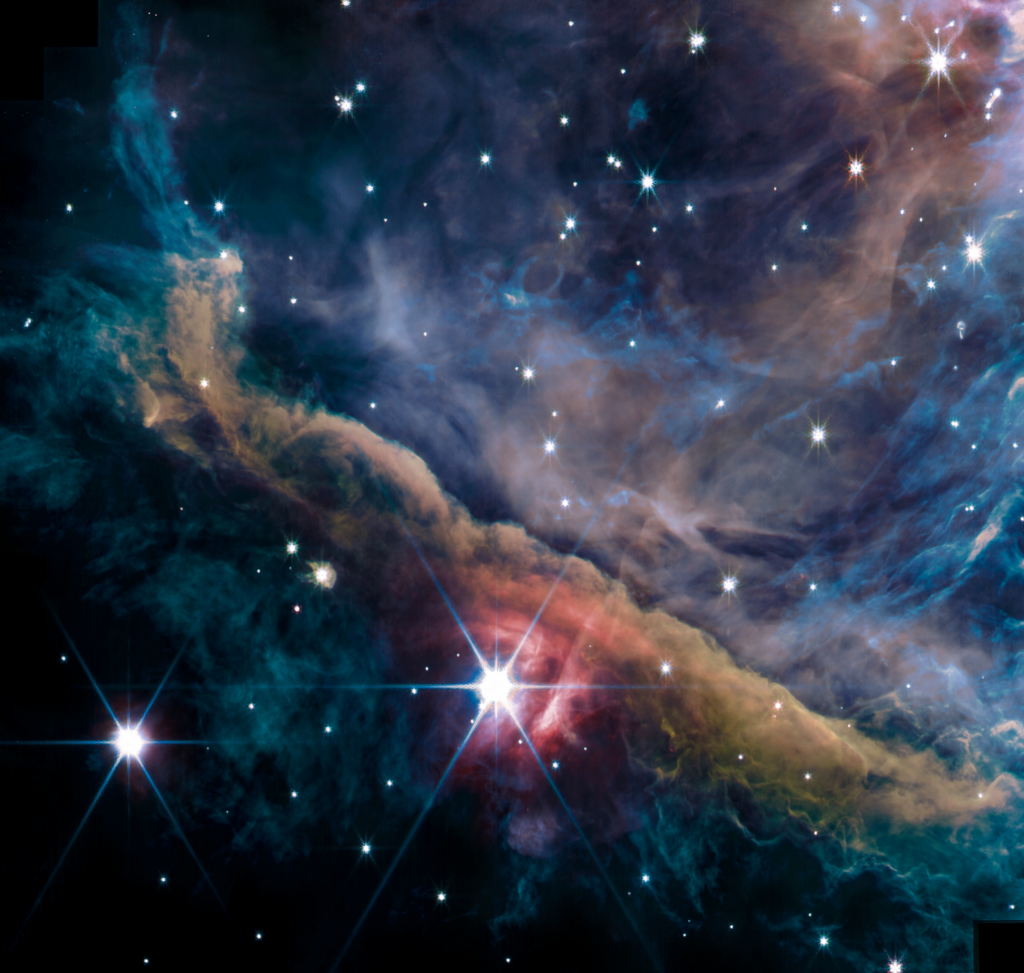
The nearest “star maternity hospital”
The Orion nebula is a huge accumulation of gas and dust, in the depths of which thousands of new luminaries are being born right now. This is one of the regions of active star formation closest to Earth. 4.5 billion years ago, our Sun also formed inside a similar “stellar maternity hospital”.
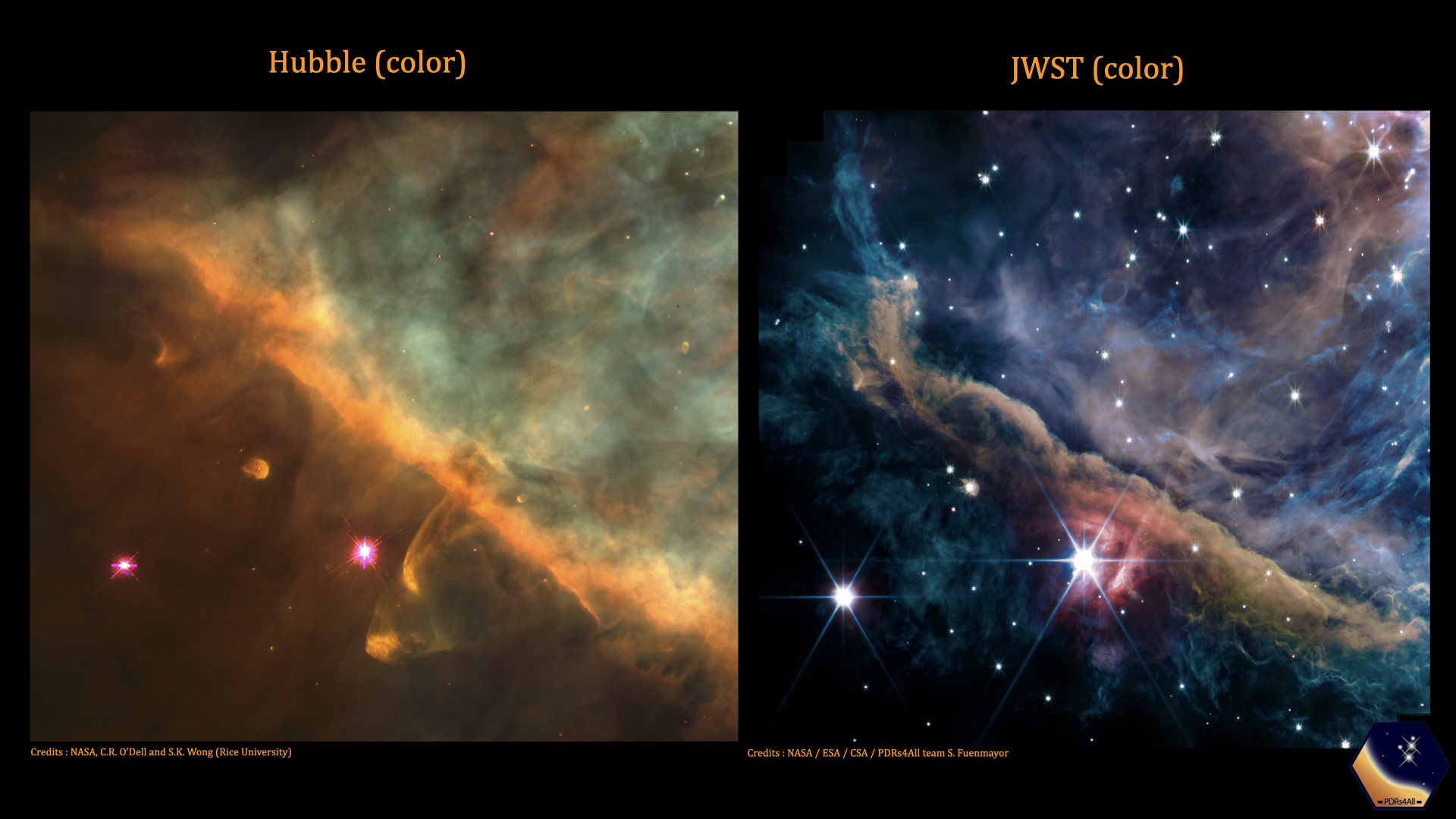
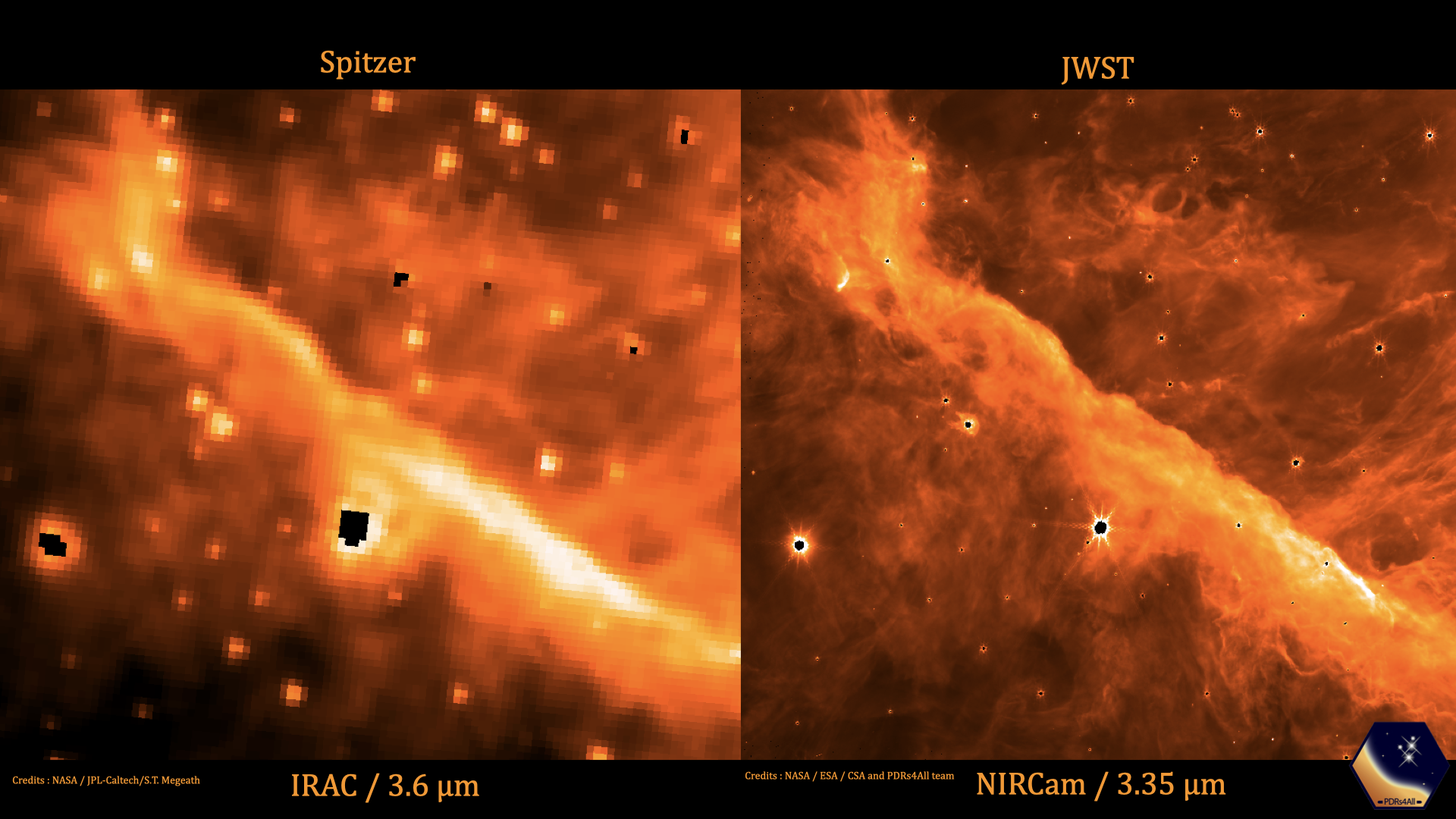
Due to its proximity to Earth (it is located at a distance of 1,350 light-years from the Solar System), the Orion Nebula can be seen in the sky with the naked eye. It is a very popular object for observations, both by amateur astronomers and the world’s most powerful observatories, which JWST has recently joined. Thanks to its ability to capture infrared radiation, which, unlike visible light, passes through dust, the telescope managed to capture many previously unknown details of the Nebula to astronomers.
Inside the Orion Nebula
The newly published images are composite. They are made using several filters that allow to see the radiation of ionized gas, hydrocarbons, molecular gas, dust and scattered starlight.
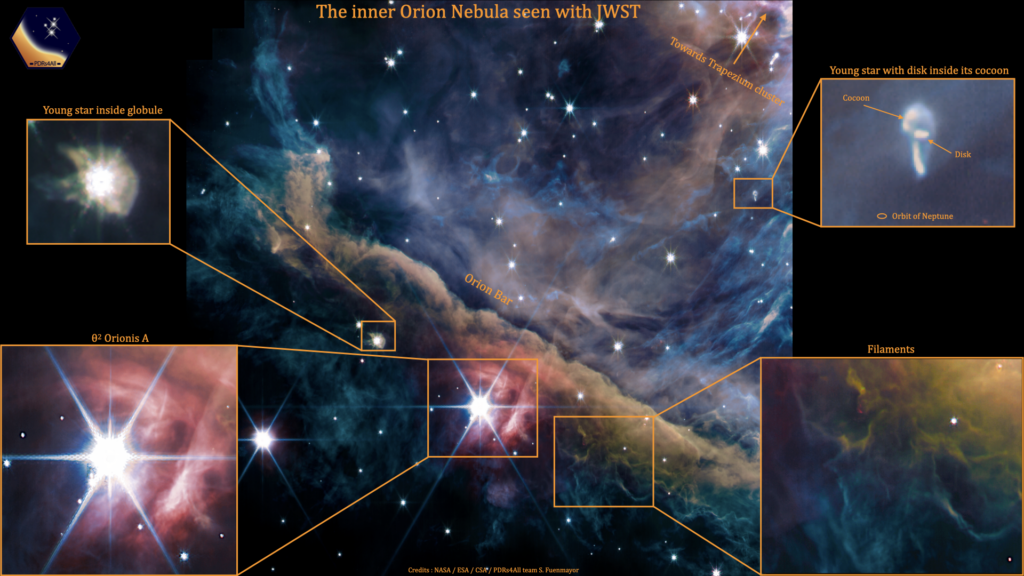
The JWST images highlight a structure known as the Orion Bar. These are a wall of dense gas and dust that stretches from the upper left corner of the image to the lower right and contains the bright star Theta 2 Orion A. The bar is illuminated by a group of hot young massive stars located in the upper right corner of the image. It is known as the Trapezium Cluster. Its powerful ultraviolet radiation gradually destroys the Barr, creating an incredible wealth of various gas-dust structures like filaments and globules.
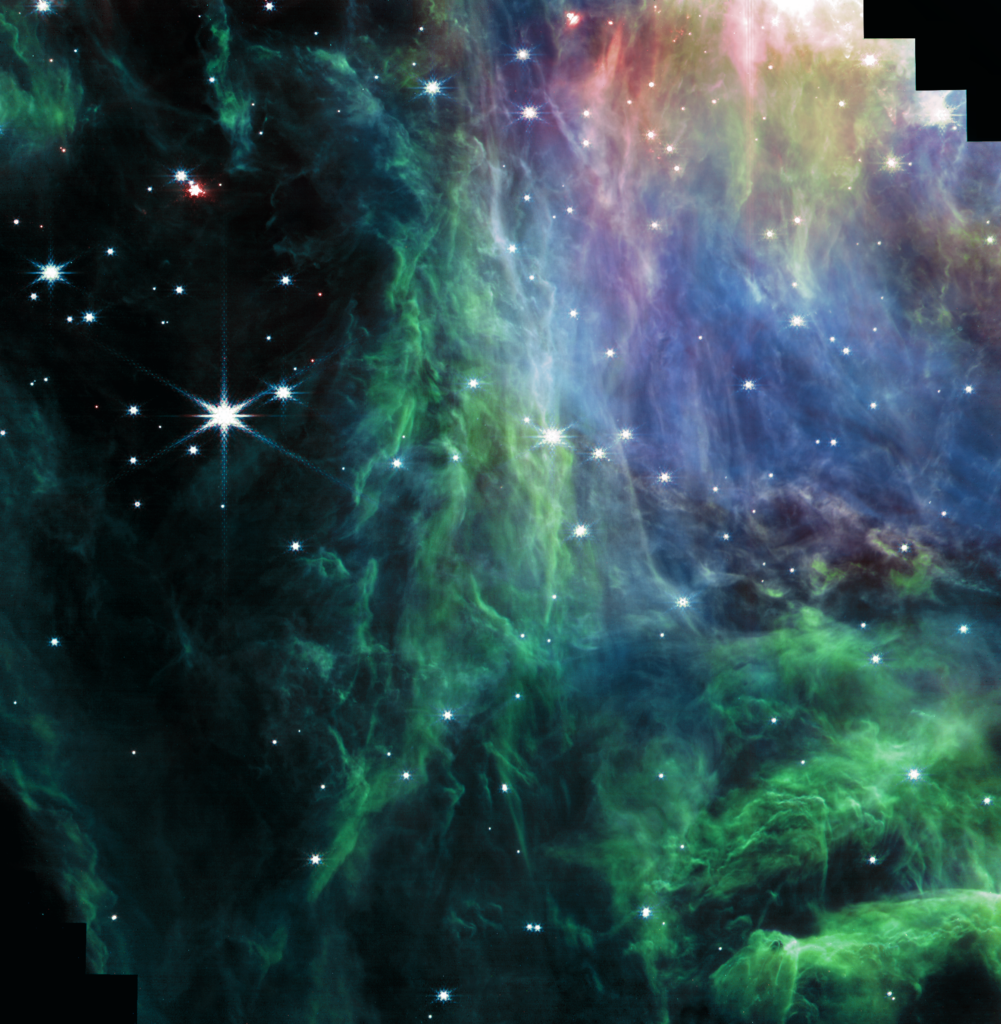
The JWST photos also show young star systems with protoplanetary disks that are still surrounded by gas-dust cocoons. Over time, they will give rise to new planetary systems that may become a home for life in the future.
According to https://pdrs4all.org
Follow us on Twitter to get the most interesting space news in time
https://twitter.com/ust_magazine

